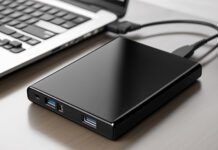Ready to automate some of those important but repetitious communication and follow-up tasks? Workflows are here to help. Here is how our ChMS workflow automation makes sure these tasks are done every time so that your pastors and staff can focus on meeting needs and discipling people.
What do workflows do? For starters, they help you create and schedule things like:
- Follow up texts, emails and personal contact assignments for guests.
- A content series in preparation for an event or church season.
- A content series to follow-up a request for more info.
- Updates to an individual’s record.
- Updates when steps in a process are completed.
- Communication to: First-time givers, kids with birthdays this week, people who’ve been absent for [three] or [four] weeks.
And these ideas are just the beginning. Think about the different communication and discipleship strategies you have or have dreamed of. It’s time to make them happen. With workflow automation, you create the system and then let the system do the administrative work for you.
Here is what is happening with this workflow:
As soon as someone is added or registered to the 1st time guest group the system does [five] things.
- Unenrolls the guest from a workflow that started when they attended an outreach event. The goal of that workflow was to get them to come a first time. They just did.
- Updates the 1st visit field on their member profile.
- Notifies Adam Barclay to do a personal follow-up within [two] days.
- Sends a customized follow-up email.
- Waits until the following Saturday at 9 a.m.
Over the next [four] months the systems [send] a series of personalized texts and emails. If the guest returns a second time, the second time workflow unenrolls him/her from this workflow. If they do not return a second time within [four] months, you have done your due diligence to follow up with them. At this point, the workflow removes them from this 1st-time guest group and archives them into a non-returning guest group in case they come back again sometime in the future.
It looks like magic, how do I know what is happening? There are several ways you can see the activity of the workflow. First of all, the People and History buttons on the top of the workflow will show you the step by step status of each person in the workflow. Second, the member profile page shows you the status of any person’s involvement in a workflow. Third, email notifications are sent when information is updated on an individual profile or someone is added to a group. Finally, you can run reports based on any attribute or group change over any time period. All of these give you the complete confidence you need to know the work is being done.
How do people enroll in a workflow? You might assume that the only way someone enrolls into a workflow is by manual data entry. This, of course, requires a staff person to enter some data. Sure you can do that, but that’s so [five] years ago. Here are [four] other ways people can be automatically enrolled into a workflow.
- Check-in. As soon as a new family enters their information into check-in, that can enroll them into a workflow. Imagine parents sitting in your worship center a few minutes after dropping off their kids when they each receive a personalized text encouraging them to enjoy worship and that their kids are in great hands.
- Registration. From a link on your website, people can register for any type of group including one asking for more information. This can enroll them into a workflow. Or take it one step further and enroll them in different workflows based on their response to a registration question.
- Texting. Give people your Text-to-ChurchTM phone number and a keyword to register for anything. All registration connections to workflows apply. What if you gave people the keyword CONNECT on Sunday mornings to text to the same number they use to text-to-give or text-to-check-in? They receive a link back to a connection card registration form. Except, after one use of the feature the software recognizes their phone number and autofills the form for them so all they have to do is put in their response to custom Connect Card questions or a prayer request. All of this information is immediately in the database which launches your workflows.
- Workflow. As you saw at the completion of the workflow illustration above, a workflow can be used to add people to a different group which in turn can enroll them into a different workflow. The possibilities are endless.
No matter what software you are using, if you are interested in learning more about workflow automation, you are invited to join us in a live Workflow Automation Webinar or learn more about Text-To-ChurchTM (full database interface by texting) in our Meet The Software webinar. These are exciting days for optimizing technology for ministry. We’d love to show you what we’re doing and hear your ideas.













